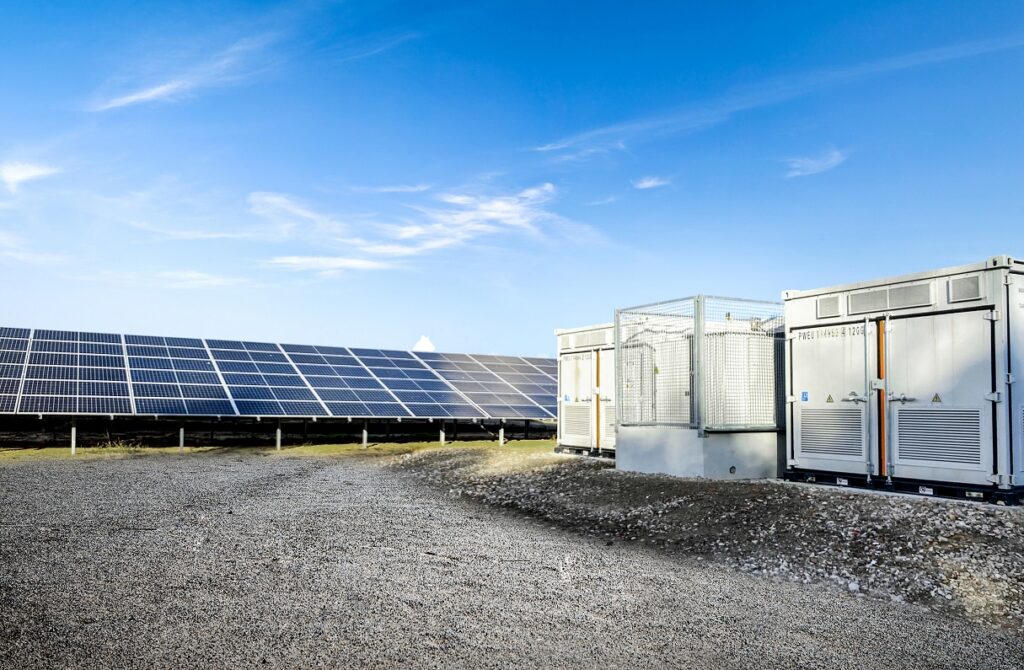
Solar and wind power accounted for 30% of the EU’s electricity generation in the first half of 2024, exceeding the contribution of fossil fuels in the first six months of the year.
This is according to the latest report from Ember Climate, which notes that fossil fuels accounted for 27% of the EU’s electricity generation in the first half of the year, a 17% decline over the first half of 2023. This fall was led by coal, which fell by 24%, equal to 39TWh, and gas, which fell by 14%, equal to 29TWh.
Try Premium for just $1
- Full premium access for the first month at only $1
- Converts to an annual rate after 30 days unless cancelled
- Cancel anytime during the trial period
Premium Benefits
- Expert industry analysis and interviews
- Digital access to PV Tech Power journal
- Exclusive event discounts
Or get the full Premium subscription right away
Or continue reading this article for free
Perhaps most encouragingly, the growth in wind and solar generation matched a growth in electricity demand across the continent, suggesting that renewables power is an effective means to meet the EU’s growing energy demand. The latest report follows Ember’s publication of a study earlier this year, which showed that solar PV was the world’s fastest-growing source of electricity generation in 2023, and solar has maintained this strong pace in the first half of 2024.
The graph below demonstrates how electricity generation changed across a number of technologies, with the growth in both solar and wind generation outpacing the growth in electricity demand.
Growth in solar across the continent
When compared to the first half of 2023, electricity generation from solar sources increased by 20%, ahead of wind, which grew by 9.5%, and second only to hydropower, which increased by 21%. Solar, wind and hydropower collectively accounted for half of the EU’s electricity in the first half of the year, a record figure, and a significant increase over the record set of 44% in 2023. Ember notes that “low carbon sources”, notably including nuclear, accounted for 73% of the EU’s electricity generation in the first six months of the year.
The report also notes that, while the growth in wind electricity generation was largely concentrated in Germany, many countries saw their solar output grow from one year to the next. Germany, Spain, Italy, Poland and Austria all added at least 2TWh of solar output in the first half of the year, compared to the first half of last year, and the EU outside of the top ten solar countries added 2.9TWh of electricity.
Growth in solar helped push four new countries to the point where renewable power generation has now outstripped fossil fuel generation: Germany, the Netherlands, Belgium and Hungary. These are some of Europe’s largest energy markets, and join a number of other countries that saw renewables power generation exceed that of fossil fuels, such as Denmark, which did so in 2017, and Lithuania, which did so in 2018.
The graph below demonstrates the leading countries in new solar and wind electricity additions, with all six countries featuring among the top ten countries for both technologies. Notable exceptions include Spain, which added 2.7TWh of new solar electricity generation, but did not rank among the top ten EU countries for wind generation, instead part of the remainder of the EU, which collectively added 1.2TWh of new wind generation.
Also, in favour of the solar sector, the EU saw worse conditions for solar electricity generation than other renewable energy sources. Ember notes that, if the EU experienced the same level of sunshine in the first half of 2024 as in the first half of 2023, the growth in solar generation would have likely hit 27TWh, compared to the recorded 23TWh.
Conversely, an increase in wind speeds across the continent helped “boost output” in the first six months of the year, suggesting that solar is particularly resilient in the face of changing climactic conditions, the more extreme ends of which have negatively affected solar electricity generation in the past.
“The first half of the year shows fossil generation’s narrowing role in the power sector, and gains for renewables that are beyond temporary variations in conditions,” said Chris Rosslowe, a senior energy and climate data analyst at Ember. “We are witnessing a historic shift and it is happening rapidly.
“If member states can keep up momentum on wind and solar deployment then freedom from fossil power reliance will truly start to come into view.”
Maintaining growth
However, the Ember report also notes that the EU will need to double down on renewable power deployment in order to meet its climate goals, despite the good work done already.
The Ember report concludes that the EU will need to see annual solar capacity additions increase by around 40% for at least three years, but the current annual growth rate is expected to slow to under 20% per year. The think tank also points out that a number of national policies implemented by EU governments fall short of continent-wide targets.
Last year, a number of EU governments submitted updates to their National Energy and Climate Plans (NECPs), which saw the bloc target the deployment of an additional 90GW of solar capacity by the end of the decade, but Ember notes that this will leave EU member states around 100GW short of the 750GW target set out by the EU itself. There is a similar story in the wind sector, with EU members on pace to install 395GW of wind capacity by the end of the decade, below the EU minimum target of 425GW and the REPowerEU plan target of 500GW.






